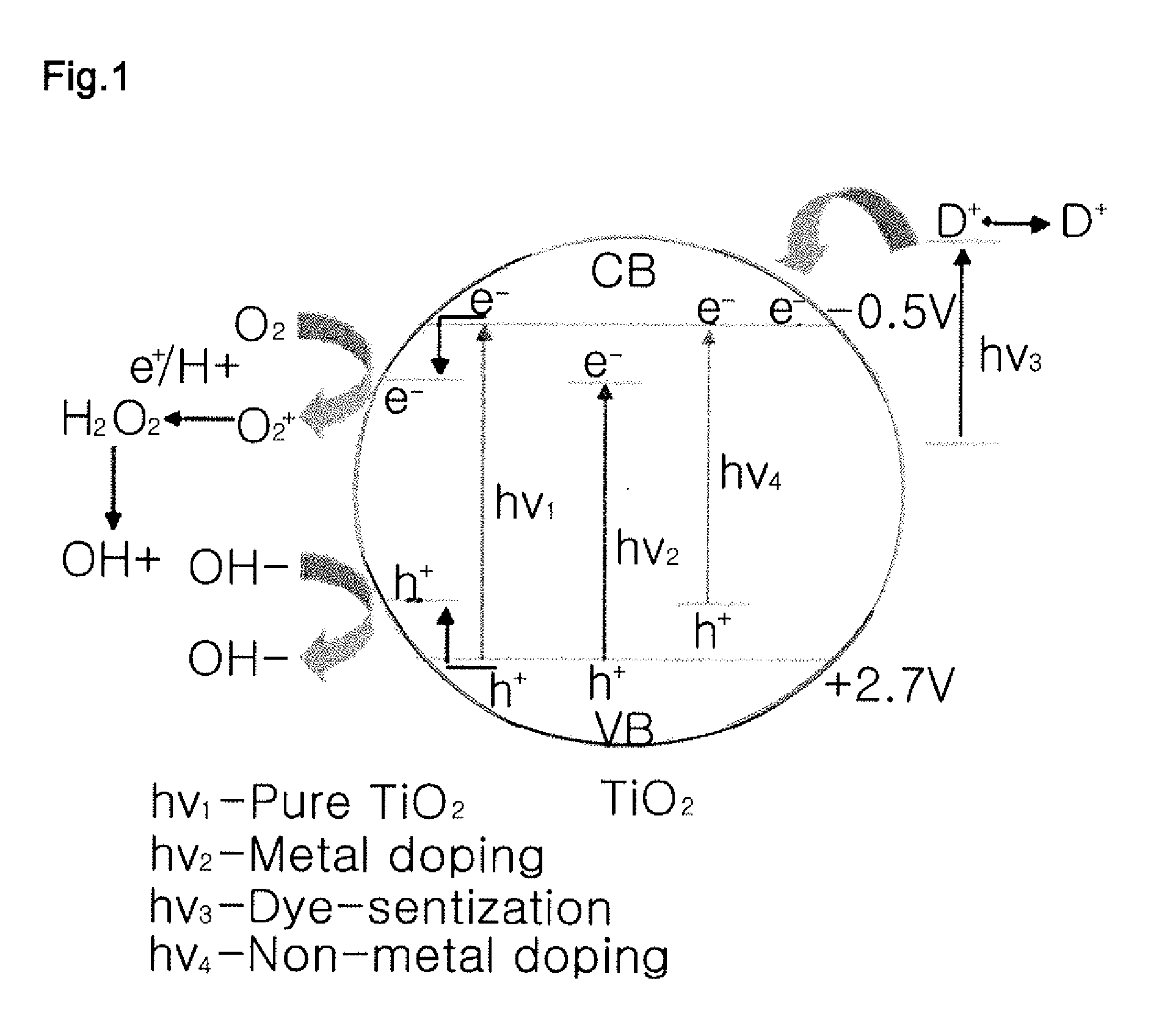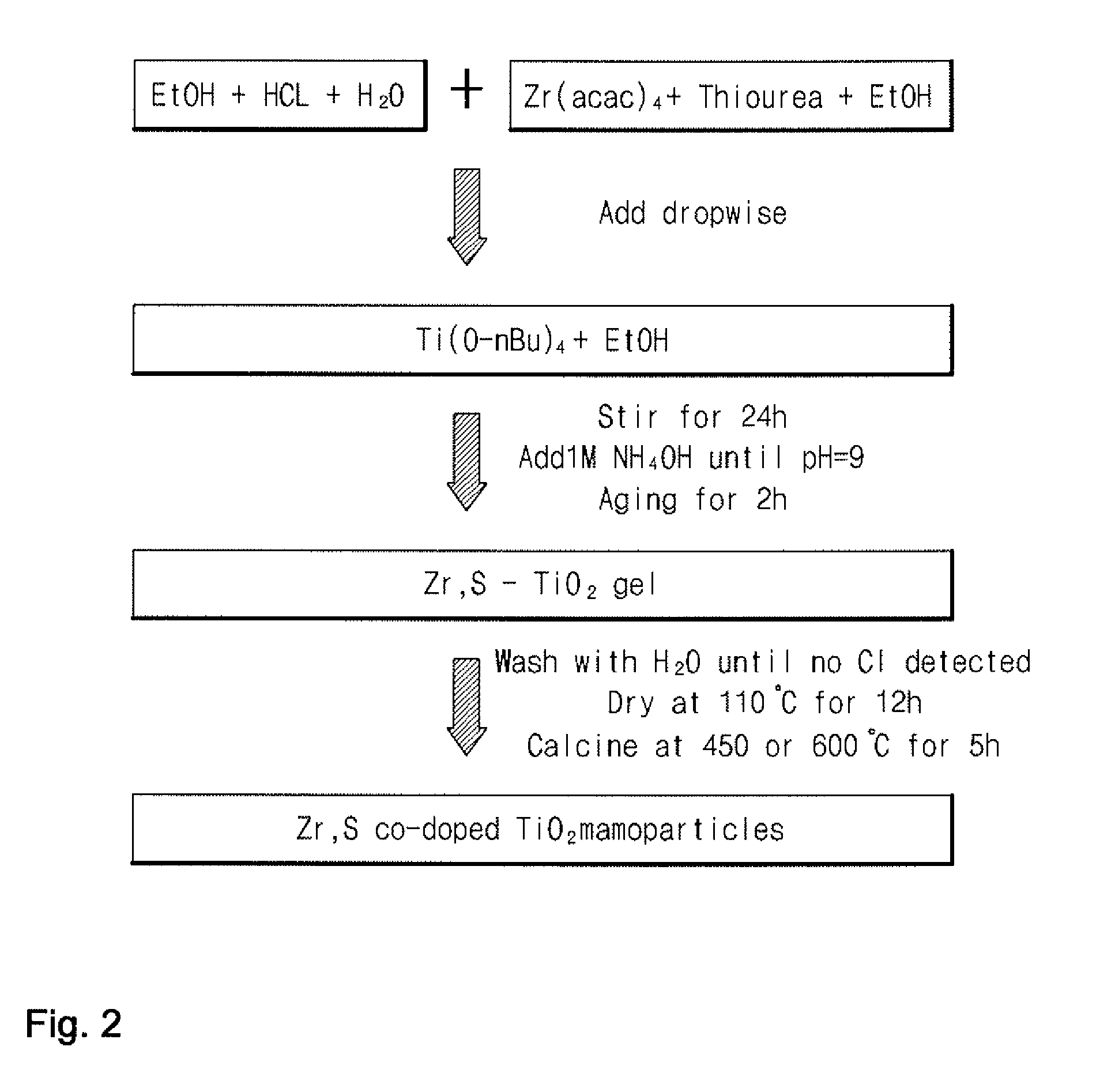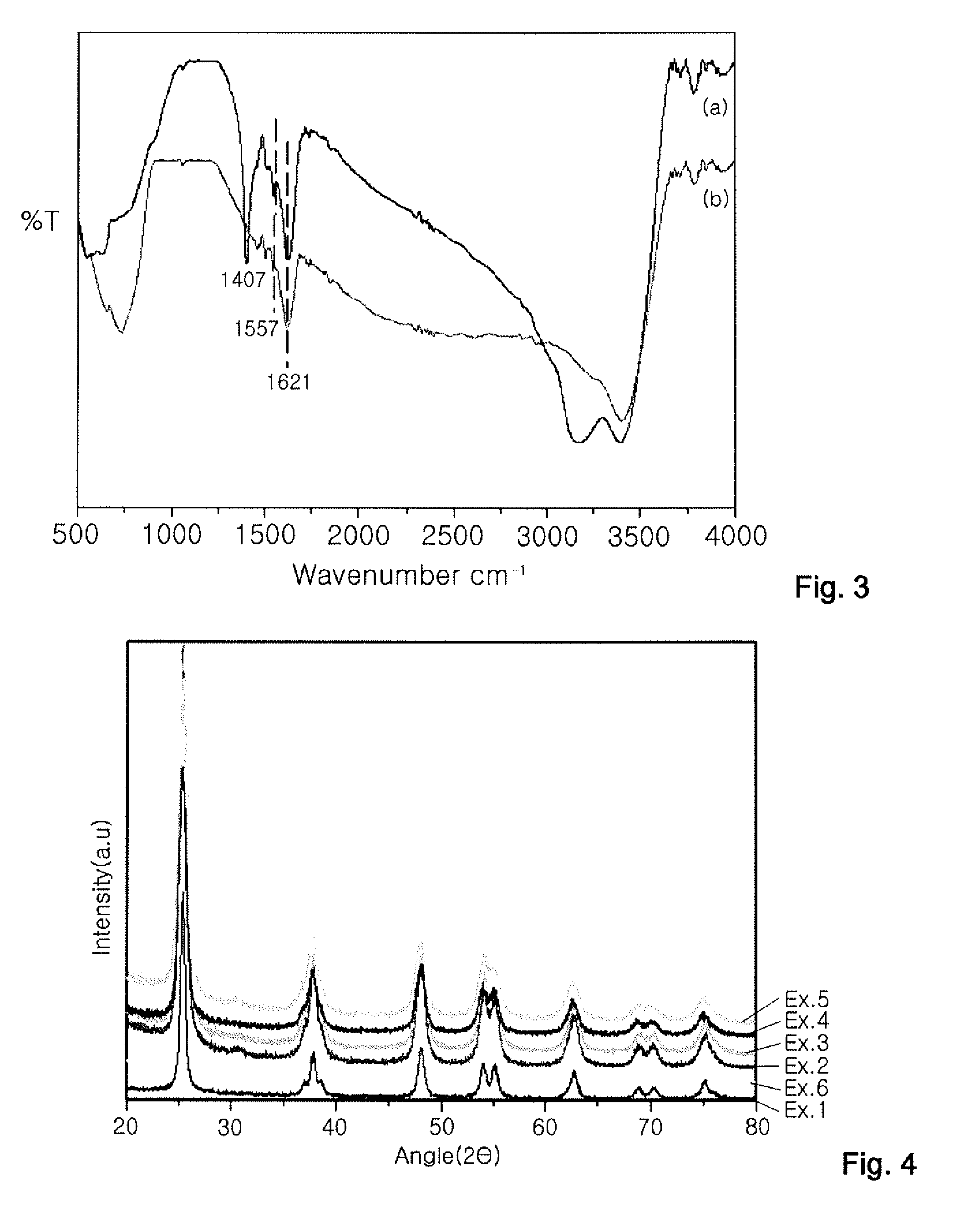PRODUCTION METHOD OF TITANIUM DIOXIDE (TiO2) PHOTOCATALYST AND TiO2 PHOTOCATALYST PRODUCED BY THE SAME
a technology of titanium dioxide and photocatalysts, which is applied in the direction of physical/chemical process catalysts, metal/metal-oxide/metal-hydroxide catalysts, etc., can solve the problems of short wavelength ultraviolet (uv) light, poor reactivity of titanium dioxide photocatalysts, and relatively short holes. , to achieve the effect of improving surface characteristics and high mesoporosity
- Summary
- Abstract
- Description
- Claims
- Application Information
AI Technical Summary
Benefits of technology
Problems solved by technology
Method used
Image
Examples
example 1
[0074]A titanium dioxide photocatalyst was produced using a sol-gel process in which an acid and a base were added in two separate steps in accordance with the following procedure:
[0075](1) Tetrabutyl orthotitanate (Ti(O-nBu)4, 21.3 mL, 62.5 mmol) was dissolved in ethanol (140 ml) to prepare a solution of the Ti(O-nBu)4.
[0076](2) Distilled water (22.0 mL, 1.2 mol) and an aqueous hydrochloric acid solution (6.0 mL, 0.20 mol) were added to ethanol (70 mL) to prepare a solution (“Solution A”). Solution A was added dropwise to the Ti(O-nBu)4 solution with stirring until pH 0.8. After completion of the addition, stirring was continued at room temperature for 24 hours.
[0077](3) 1 M NH4OH solution was added dropwise to the mixed solution with stirring until pH 9.0. The resulting solution was gradually converted to a gel. After the gel was observed, aging was performed for 2 hours, followed by filtration to remove the remaining solution. The filtered gel was washed with distilled water to r...
example 2
[0080]Zirconium acetylacetonate (Zr(acac)4, 0.15 g, 0.30 mmol) and thiourea (2.38 g, 31.25 mmol) were added to ethanol (70 mL) to prepare a solution (“Solution B”). The procedure of Example 1 was repeated except that Solution B and Solution A were added dropwise in step (2) of Example 1 to produce 0.5Zr,S—TiO2. In the photocatalyst, zirconium was doped in an amount of 0.5 parts by weight, based on 100 parts by weight of titanium dioxide.
example 3
[0081]1Zr,S—TiO2 was produced in the same manner as in Example 2 except that the amount of the zirconium source was changed. In the photocatalyst, zirconium was doped in an amount of one part by weight based on 100 parts by weight of titanium dioxide.
PUM
| Property | Measurement | Unit |
|---|---|---|
| reaction time | aaaaa | aaaaa |
| pH | aaaaa | aaaaa |
| temperature | aaaaa | aaaaa |
Abstract
Description
Claims
Application Information
 Login to View More
Login to View More - R&D
- Intellectual Property
- Life Sciences
- Materials
- Tech Scout
- Unparalleled Data Quality
- Higher Quality Content
- 60% Fewer Hallucinations
Browse by: Latest US Patents, China's latest patents, Technical Efficacy Thesaurus, Application Domain, Technology Topic, Popular Technical Reports.
© 2025 PatSnap. All rights reserved.Legal|Privacy policy|Modern Slavery Act Transparency Statement|Sitemap|About US| Contact US: help@patsnap.com



